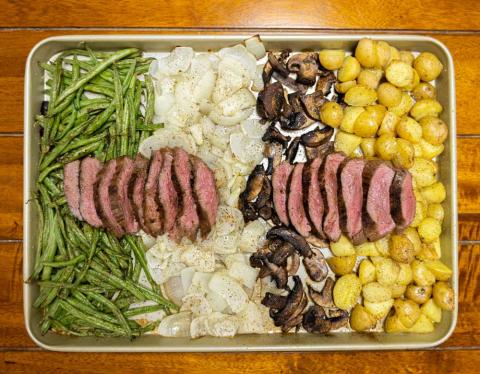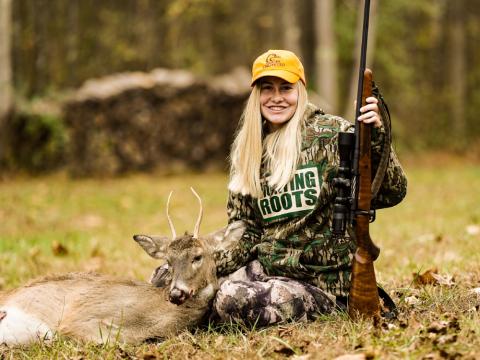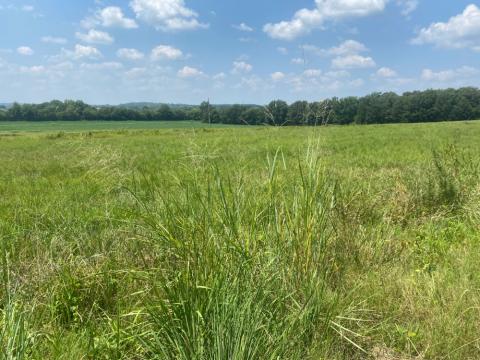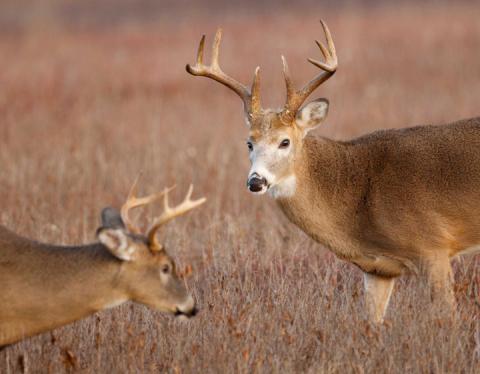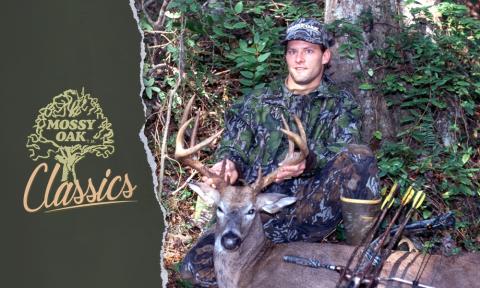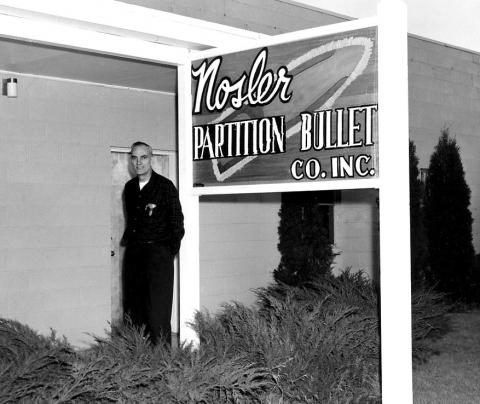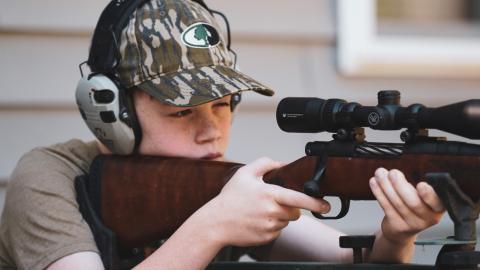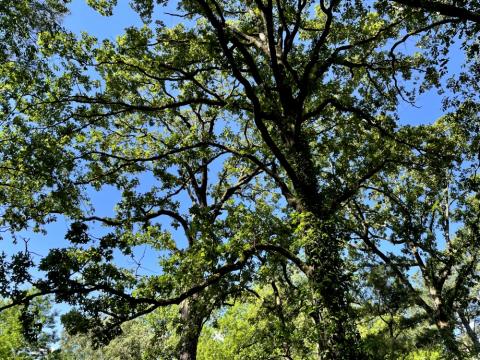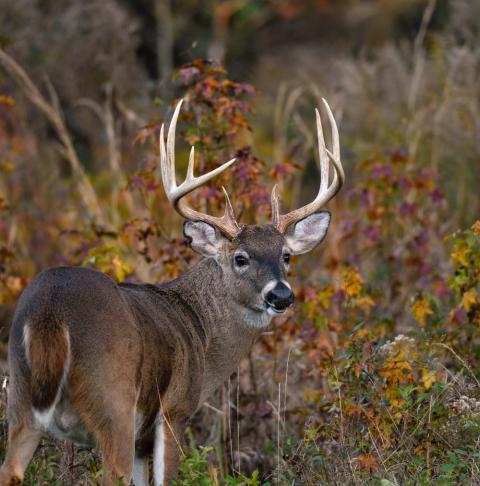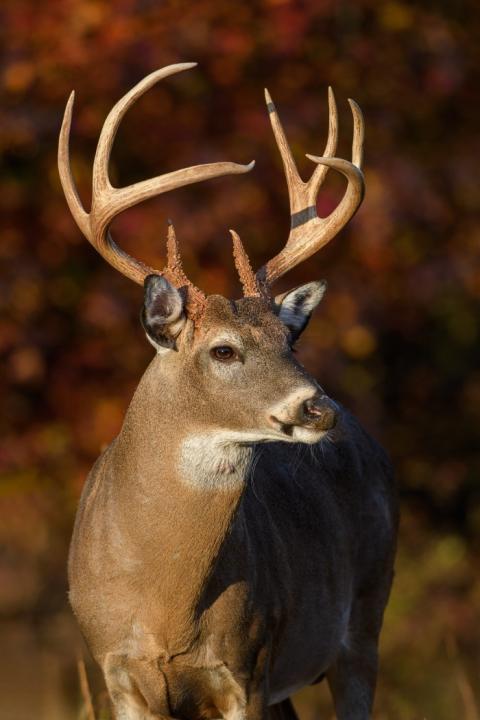The golden shiner (Notemigonus crysoleucas) is one of the largest of the minnow species in North America. Its native range is from southern Canada to as far south as the Florida Everglades and as far west as Wyoming. It has been introduced into areas west of the Rocky Mountains and is found throughout most of the United States. The adults have greenish to golden scales and reddish fins and may attain sizes of up to 11 inches. Because they are a relatively long and narrow fish with soft fin rays, they are an ideal forage fish for bass.
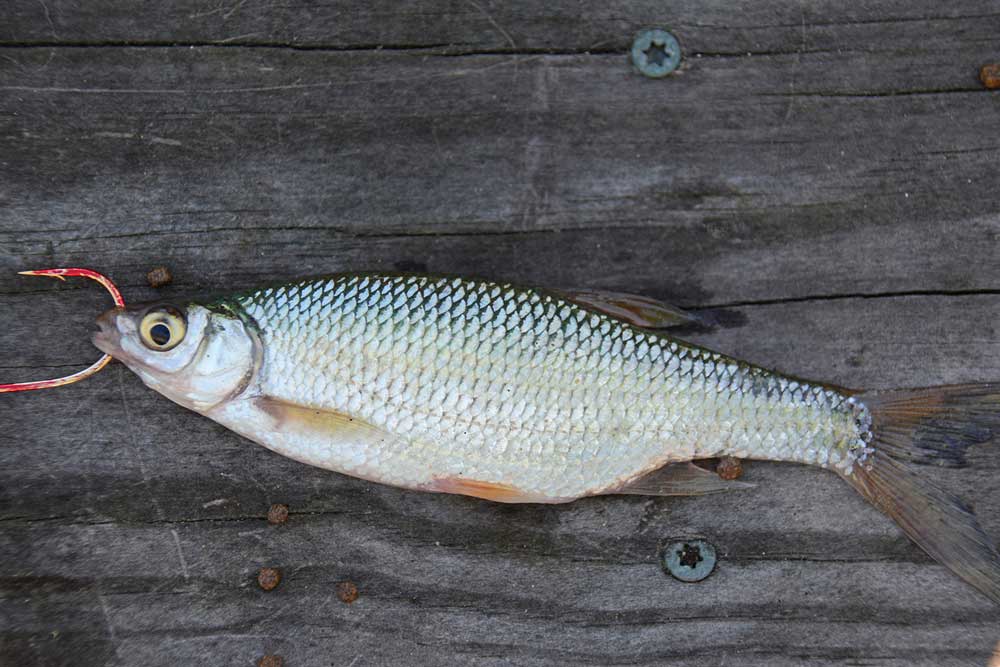
Golden shiners are one of the two most widely cultured bait fishes (along with fathead minnows) and have been cultured in ponds for more than a half century. Because they have been genetically selected for many years for bait production, it is thought by many biologists that their behavior in recreational bass ponds is different than that of wild shiners. They are both the same species, but different in their ability to adapt to wild populations of game fish.
Golden shiners begin their spawning season during April in the southeast and continue spawning through August and September, laying their eggs 4 to 5 times a season. Shiners produce adhesive eggs that stick to aquatic plants, gravel, and sand. It has been documented that shiners will deposit their eggs in the nest of sunfish and leave the male sunfish to care for their eggs. In many areas, shiners obtain sexual maturity at one year of age, although the offspring of early spawned shiners may spawn during late summer or early fall. Mature females that are 6- to 8-inches in length may produce up to 200,000 eggs. It normally takes 5 to 7 days for eggs to hatch and the tiny fry are subject to be eaten by predacious zooplankton, insects and almost every size of sunfish in a wild fish population.
Golden shiners are omnivorous feeders and can graze on phytoplankton, small zooplankton, insects and other materials. They are not filter feeders, like threadfin shad, and eat single organisms. Shiners are not dependant on phytoplankton blooms for their growth and survival. Although regarded as a competitive species in a bass-bluegill lake, shiners adapt well to small floating fish food and it is common to grow both shiners and large bluegill with this scenario.
During the early 1950s, many state game and fish agencies recommended that golden shiners not be stocked in bass-bluegill ponds and also that shiners not be used as bait, fearing that escaped bait would subsequently establish a shiner population. During that era, many of the population problems in bass-bluegill lakes were because of over-harvest of largemouth bass, leaving too few bass to control shiner reproduction. Within the last three decades, under-harvest of largemouth bass has contributed to 80 percent of pond and lake problems, leaving an abundance of small bass to control shiners.
Auburn University's School of Fisheries has long been regarded as the pioneer of recreational pond management in the southeast. Under the guidance of the late Dr. H. S. Swingle, stocking techniques that were developed in the late 1940s and early 1950s are still used today by many state agencies. Dr. Wayne Shell, Professor Emeritus and previous head of the Fisheries Department, said that Swingle did not research the role of shiners in bass-bluegill ponds.
"Swingle developed a stocking ratio for a simple bass-bluegill population and analyzed population dynamic models for this bass-bluegill-only game fish population. Although there were large bass inadvertently produced in some ponds and lakes, his objective was to create a self-sustaining population of fish that could provide a source of food to poor rural land owners. Within a few years his research moved on to forms of aquaculture, such as channel catfish production," said Shell. "It is a shame that we did not continue research into creating recreational game fish populations and that there appears to be little or no interest at Auburn in that type of research today."
Stocking shiners:
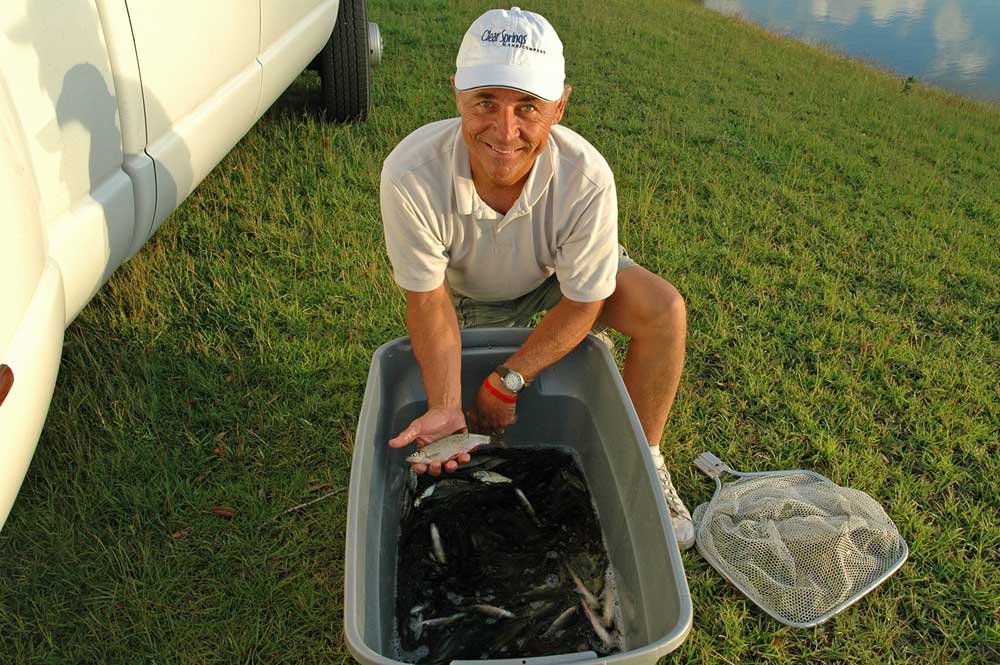
Establishing a shiner population in an existing bass-bluegill lake is not always easy. The most common source and size of the golden shiner is the 3- to 4-inch bait minnow. For best results, these fish should be stocked in early spring just prior to spawning, March through mid-April in the southeast. This reduces the time the shiners will be subject to bass predation prior to their spawning.
Robby Mays, co-owner of American Sport Fish, claims, "The rate of stocking for existing bass ponds is approximately 2,000 shiners per acre (approximately 20 pounds per acre for a 4-inch shiner)."
Another alternative that appears to be attractive to many pond owners is the stocking of shiner fry, available from several minnow farms in Arkansas. These can be shipped to your house or office in sealed plastic bags inside a box. The numbers in each bag (100,000 +) seem to be enticing to pond owners. Mortality on these tiny fry is heavy from predacious zooplankton, insects and small sunfish. Although it can sometimes work, the odds are low that stocking fry will produce a sustaining population of golden shiners in your bass pond.
Stocking 5- to 6-inch wild shiners appears to be the most effective method of creating a population of golden shiners in your bass pond. Freddy Langford, of Langford Aquatics (863-644-0702) in Lakeland, Fla., stocks his client's lakes with 50 to 100 pounds or more of wild Florida shiners.
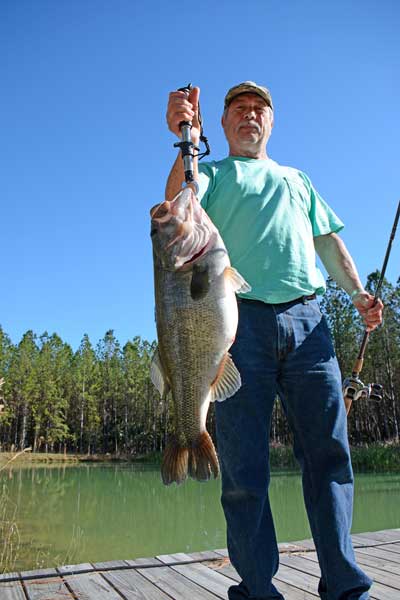 "We have been successful in establishing shiner populations in bass lakes throughout the southeast by stocking these large wild shiners," claims Langford. "All of the lakes we manage for trophy bass have good shiner populations. Because of their shape and size, they are perfect forage for trophy bass. We supplementally feed all of these ponds with a small floating high-protein pellet. Large schools of shiners congregate in front of the feeders, and the big bass crash through these schools on a regular basis. It is exciting for the pond owner and angler to watch these huge bass slash through a school of shiners on the surface. Fishing with a big shiner on a float is a sure way for even a novice angler to hook a real trophy."
"We have been successful in establishing shiner populations in bass lakes throughout the southeast by stocking these large wild shiners," claims Langford. "All of the lakes we manage for trophy bass have good shiner populations. Because of their shape and size, they are perfect forage for trophy bass. We supplementally feed all of these ponds with a small floating high-protein pellet. Large schools of shiners congregate in front of the feeders, and the big bass crash through these schools on a regular basis. It is exciting for the pond owner and angler to watch these huge bass slash through a school of shiners on the surface. Fishing with a big shiner on a float is a sure way for even a novice angler to hook a real trophy."
Golden shiners can be established in new lakes by stocking 1,000 4-inch shiners per acre during the same time frame that fingerling bluegill are stocked.
Shawn McNulty, co-owner of American Sport Fish says, "We recommend golden shiners for every new pond that is stocked for trophy bass management. There are a number of advantages in utilizing shiners along with bluegill and threadfin shad, shiners are temperature tolerant so there is no winter kill. They feed on a variety of food items and are not totally dependent on a heavy phytoplankton bloom. Shiners thrive in weedy ponds and feed well on supplemental fish feed from an automatic fish feeder. Having a variety of forage fish better utilizes the pond's food supply and increases food production well beyond that of bluegill only."
Dr. Wayne Shell states, "Very little management is required to create good fishing in a bass- bluegill lake during the first two years. However, diversity of forage and more intensive management is required for long-term success, especially for large bass...golden shiners are an excellent option!”

















